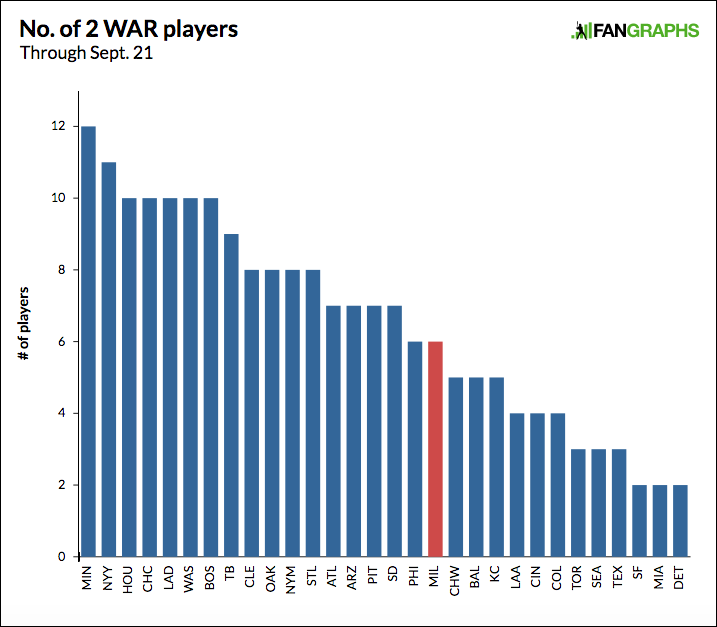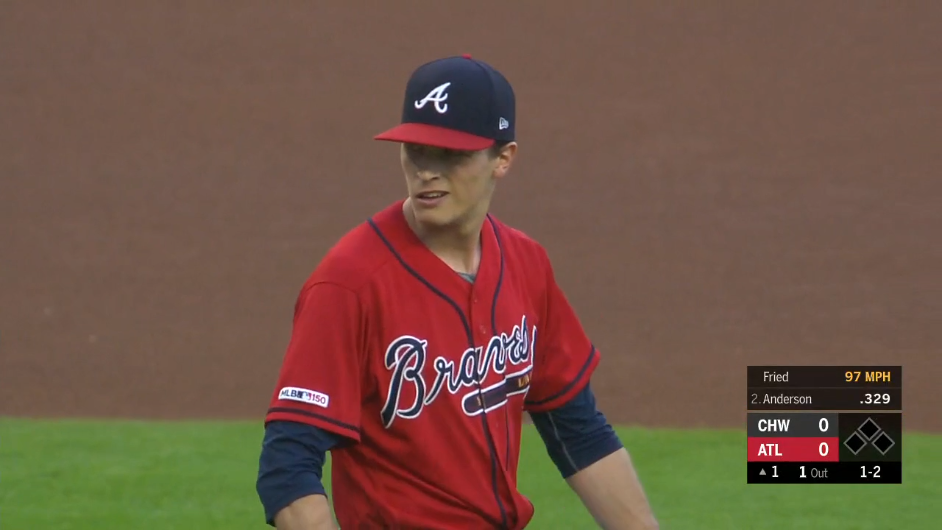The Los Angeles Dodgers, at one point, had a weakness. Not a glaring one, and not one that was going to single-handedly derail their World Series hopes, but a weakness nonetheless. As of July 26, their catchers had combined for a ghastly 69 wRC+. Even considering the skid catcher offense has experienced in recent seasons, that’s a bad number, ranking 24th in baseball at the time. Because they were worth the sixth-best defensive rating in baseball, they sat firmly in the middle of the pack at 1.1 WAR. But their performance still represented a hole in a lineup that was otherwise loaded. The Dodgers could have attempted to trade for a catcher, but the market lacked an obvious J.T. Realmuto-esque candidate, with James McCann standing as seemingly the best option. Instead, the Dodgers promoted Will Smith from Triple-A. Smith, 24, had played in just nine big league games before being called up. A month later, he might be the best offensive catcher in baseball.
That sounds jarring until you look at his numbers. In 102 plate appearances, Smith is hitting .318/.392/.818 with 12 homers and a 197 wRC+. In just 28 games, he already leads all catchers in offensive runs above average (Off). That is a counting stat.
In a fraction of the time any other catcher has had in the majors, Smith has surpassed the field in total offensive production. The catcher position is notoriously shallow in terms of hitting talent across the majors, but the best of the bunch is still an impressive group. Sánchez is a barrels machine, Realmuto is the best overall catcher in the game, and Yasmani Grandal and Willson Contreras are both incredibly talented players. And yet, Smith has generated more value at the plate than any of them, in nowhere near their number of plate appearances.
That production has boosted a Dodgers lineup that almost certainly could have survived without the added help, but has gotten it anyway. The team entered the 2019 season with veterans Austin Barnes and Russell Martin plugged into the catching position. Barnes, 29, had a breakout season in 2017 when he put together a 142 wRC+ in 102 games while playing excellent defense, but his offense cratered in 2018 when he produced just a 78 wRC+. Martin, meanwhile, was acquired from Toronto in the offseason before playing the last year of a 5-year, $82-million contract he signed after the 2014 season. This season, both Barnes and Martin have experienced career-worst seasons at the plate, paving the way for the organization to promote Smith, who ranked as the 80th-best prospect in baseball on Eric Longenhagen and Kiley McDaniel’s preseason Top 100 list. In less than a month, Smith has rocketed Los Angeles from 24th to 10th in catcher wRC+, and from 15th to 8th in catcher WAR.
Smith, of course, could always hit some. A first round selection (No. 32 overall) by the Dodgers out of Louisville in 2016, he did modestly well at the plate over his first two seasons of pro ball, largely boosted by good walk rates of well over 10%. He showed power for the first time in a 72-game stint with Rancho Cucamonga in the hitter-friendly California League in 2017, boosting his ISO from .103 in the previous season to .216. He continued to add power at the Double-A level in 2018, again raising his ISO to .268 while maintaining a steady walk rate over 11%, but he struggled mightily after a promotion to Triple-A, finishing 25 games with a wRC+ of 8.
He was called up for the first time on May 28, though only briefly. He played six games over the next week or so, and hit a pair of homers while slashing .286/.348/619. His first career home run was a walk-off against the Phillies.
He was sent back to the minors with an OPS of .967. It hasn’t been that low since. He came back to the majors for three games at the end of the month and homered again, this time in a pinch hit spot. It was another walk-off.
Smith went on the injured list because of an oblique on June 26, and remained in Triple-A Oklahoma City until the Dodgers brought him back in late July; if his play is any indication, it seems unlikely he’ll return to the minors anytime soon. In Smith’s first game back in the majors on July 27, he went 3-for-3 with a homer and two doubles, driving in six runs. He hasn’t slowed down since then, hitting safely in 16 of the 19 games he’s played since his last call-up, with a total of 16 extra-base hits. His .548 ISO in that span is first in the majors, while his 216 wRC+ is third and his 1.5 WAR is seventh.
You might skeptical of how sustainable his numbers are, and after just 28 games, you’d be right to be. Smith likely isn’t a true talent 197 wRC+ hitter, nor is he going to keep up a nearly 12-WAR pace over a full season. But there’s evidence to support the notion that he’s a top-tier catcher bat. With 64 batted ball events under his belt, his barrel rate is 9.8%. For reference, Peter Alonso’s barrel rate is 9.9%, and those rates tend to stabilize faster than others. He also has an xSLG of .558 — well below his absurd current figure, but still an indication that his power numbers aren’t a total mirage, even if his average home run distance of 396 feet doesn’t quite match up with the very best of the best.
It’s great news for the Dodgers that they have a sweet-swinging catcher on their roster now, but does that mean he’s a step below the others on defense? Not necessarily. In 28 games behind the plate, he’s accumulated 3.0 defensive runs saved. That doesn’t place much of a gap between him and Barnes (9.5 defensive runs saved in 70 games) or Martin (7.6 in 68 games). He hasn’t played nearly enough games for his defensive metrics to stabilize enough to be trustworthy, but the fact that the early returns seem to be so positive can only be a good sign for his presence behind the plate.
Smith is likely going to regress, be it in the next couple of weeks or sometime next year. Fortunately, there’s so much space between his offensive numbers and the rest of the catching field that it will take a bit for the pack to catch up with him. He had solid hitting pedigree as a prospect, but I don’t know that anyone could have expected this. The juiced ball can take some shine off of any great power tear we’ve seen this season, rookie or not. But it isn’t as though every other backstop isn’t getting to swing at the same ball. Smith just happens to be hitting it better than anyone else. He’s the best hitting catcher in baseball right now. Finally, the hard-luck Dodgers get a break.



